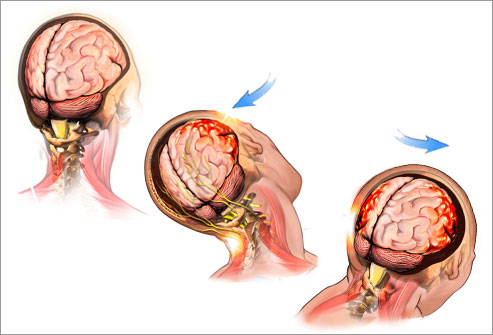Concussions are called an ‘invisible injury’ because its symptoms aren’t always easy to recognize and even MRI imaging isn’t perfect at identifying a concussion. But with this kind of brain trauma, the effects are all too real. According to Scientific American, one blow to the head may increase your risk of a mental health disorder. We’ll cover some steps you can take to reduce your chances of suffering long term effects after a hard hit.
What is a Concussion?
A concussion is traumatic brain injury caused when the brain is shaken inside the skull, which can cause damage to blood vessels in the brain or even injury to the brain tissue itself.
All it takes is a hard tumble on the basketball court or a blow to the head or the body. Yes, that’s right — you don’t necessarily have to hit your head. For example, when your body stops suddenly due to a hard tackle or a strong pick, it can cause whiplash and a concussion.
Some people think concussions only happen if you black out. But nine out of ten concussions don’t make you lose consciousness, and some only cause a brief interruption in mental alertness. Studies find that most high school and college athletes don’t report concussions while playing football. They might not realise that a concussion can happen even if you don’t black out.
In the past, athletes in many sports returned to play too soon after a concussion, sometimes even on the same day. But sports and health organizations are starting to take these injuries much more seriously. Trainers, health care professionals and athletes themselves are watching more closely for concussions and taking a more conservative approach to rehabilitation and return to play. This is an important change for the health of athletes everywhere.


